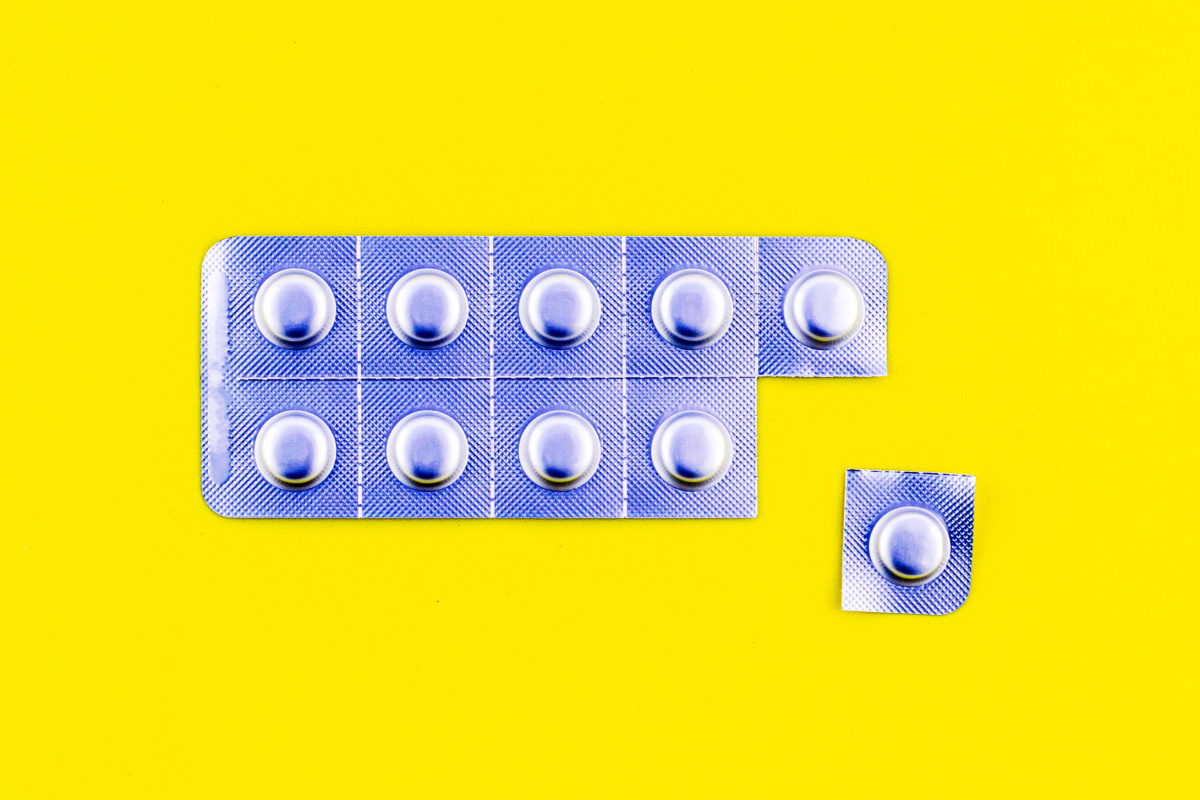Did you know that a single misstep in content compliance can cost pharma companies billions?
Whether it’s a rogue tweet, a misplaced logo on packaging, or a miscommunication in clinical trial data, non-compliance can lead to huge fines, lawsuits, and a massive blow to your reputation. It’s not just about doing the right thing. Compliance in the pharma industry is as essential as the scientific breakthroughs that lead to life-changing drugs.
Let’s dive deep into the importance of compliance, key areas to focus on, strategies to ensure compliance, and the future of pharma content compliance.
It’s time to empower your pharma marketing teams and healthcare professionals with knowledge that matters.
Understanding the Pharmaceutical Industry
Think of the pharmaceutical industry as a vast ocean. Within it, every pharma company, from the industry giants to the budding startups, plays a major role like a ship navigating the high seas.
These companies (or ships) all have a common mission: to develop, produce, and market drugs or pharmaceuticals. They are responsible for creating life saving medications, breakthrough vaccines, and innovative treatments that boost our health and well-being.
But the role of a pharmaceutical company extends beyond creating medicines. They’re also heavily involved in research and development, rigorous testing, and extensive marketing efforts. These activities profoundly impact global health, from how diseases are treated to how we think about wellness.
From bringing a ray of hope to a cancer patient to relieving a child’s asthma symptoms, pharma companies play a significant role in making the world a healthier place.
The Regulatory Environment of the Pharmaceutical Industry
When you’re in the business of health, there’s no room for error. That’s where the regulatory environment comes into play. Consider it the lighthouse guiding each ship (aka pharma company) in this vast ocean. Regulatory agencies worldwide, such as the US Food and Drug Administration (FDA), European Medicines Agency (EMA), and others, set strict rules and regulations to ensure pharmaceuticals’ safety, efficacy, and quality.
The marketing authorization bodies govern everything from the initial development of a drug to its manufacturing process, marketing, and even post-market surveillance. But that’s not all. They also have a say in content creation, regulating everything from product packaging and labeling to promotional materials. It’s a complex, interconnected ecosystem where every piece of information, every claim, and every image used by pharmaceutical manufacturers must meet specific compliance standards.
Staying in line with these regulations is not just about avoiding penalties—it’s about maintaining the trust of healthcare professionals, patients, and the wider public. In other words, compliance equals credibility in the pharmaceutical world. As we move forward, we’ll explore this intricate regulatory landscape in more detail and unveil strategies to help you sail smoothly through the choppy waters of pharma content compliance.
The Importance of Pharma Content Compliance
Let’s take a moment to decipher the term’ pharma content compliance.
In simple terms, it’s the practice of ensuring all content created and distributed by a pharma company—be it promotional materials, product labels, or data reports—meets the stringent guidelines set by regulatory authorities. It’s all about ensuring every piece of information shared is accurate, fair, balanced, and doesn’t contain misleading claims.
But why is this so critical?
Imagine this: you’re a patient looking at a medication’s packaging or a healthcare professional reviewing an advertisement. You trust the information presented to be accurate. Compliance ensures that trust isn’t misplaced. It protects patients and healthcare professionals from misleading claims and ensures they have the right information to make informed decisions.
For pharma teams, it’s all about balancing being informative and remaining within the boundaries set by the regulations.
Compliance Regulations: Ensuring Quality and Safety
Pharma content compliance revolves around several key areas, each with its unique set of regulations. These strict regulations are designed to ensure quality and safety at every step of the pharmaceutical lifecycle. Let’s take a closer look at a few:
- Promotional Content: From sales reps’ pitches to social media posts, all promotional content must be accurate, balanced, and not misleading. It should communicate potential side effects and risks along with the benefits of the medication.
- Product Labeling: This is the main source of information for patients and healthcare professionals. As such, labels must provide clear, comprehensive information about the product, including its uses, dosage instructions, and potential side effects. No room for ambiguity here!
- Package Inserts: These documents accompanying medications must be thoroughly detailed, providing everything from scientific information about the drug to instructions for use and safety information.
- Clinical Trials Data: Transparency is key here. All clinical trial data, including negative results, must be accurately reported and readily accessible for review.
These are just a few examples. The landscape of compliance regulations is extensive and ever-evolving, making staying compliant a continuous journey for pharma companies. But fear not! This journey can be less daunting and more rewarding with the right strategies and tools. So, let’s get ready to explore this further!
The Consequences of Non-compliance
In the world of pharmaceuticals, making the wrong move can result in cascading effects that could put your entire company at risk. So, what happens when pharma companies fail to follow the precise dance of compliance?
Not adhering to regulatory guidelines can lead to severe legal consequences. We’re talking massive fines running into millions, even billions, of dollars. And that’s not just a number on a balance sheet. It’s a direct hit to a company’s bottom line and could significantly affect its future investments in research and development.
And then there’s the issue of misleading statements or inaccurate information in your content. Remember, in the pharma industry, information isn’t just power—it’s a matter of life and death. Misleading or inaccurate content can lead to misuse of medicines, adverse health effects, or even loss of life. From a legal perspective, this could open up the floodgates of lawsuits from regulatory authorities, patients, and healthcare providers.
Beyond the legal and financial repercussions, another significant risk is a damaged reputation. Trust, once lost, is incredibly hard to regain. A compliance breach can lead to losing faith among healthcare professionals, patients, and the wider public. And in an industry where trust is everything, this could be a major blow.
Finally, non-compliance could also lead to operational disruptions. Regulatory authorities may demand immediate corrective actions, which could lead to halting production, withdrawing products from the market, or revising and redistributing structured content. This could severely impact the company’s operations, sales, and overall business continuity.
So, when it comes to compliance, it’s not just about ticking the boxes—it’s about understanding the gravity of each rule and the implications of breaking them. Compliance is about creating a safer, more trustworthy world for us all. But don’t fret! We’re here to help you navigate this compliance journey one step at a time. Let’s explore the key areas of pharma content compliance.
Key Areas of Pharma Content Compliance
Navigating the choppy waters of pharma content compliance requires a keen understanding of the key areas that require special attention. These areas form the pillars upon which robust compliance strategies are built.
- Marketing and Advertising: Creating marketing content for pharma products isn’t the same as selling shoes or soda. Here, every word matters. Advertising materials must adhere to specific guidelines, whether they’re print ads, social media posts, or email campaigns. The content should provide a balanced view of the drug, covering its benefits and potential side effects. Misleading or exaggerated claims are a big no-no.
- Product Labeling and Packaging: This is where the essence of your product lies. Labels and packaging should include accurate and comprehensive information about the product. This ranges from the active ingredients, dosage, and administration instructions to potential side effects and contraindications. Remember, clear and truthful information on these aspects can be a lifesaver, quite literally.
- Clinical Trials Data Management: Transparency is the name of the game when managing data from clinical trials. Complete and accurate reporting of trial results, adverse reactions, or other findings is crucial. Fraud and misconduct in clinical research is unethical and can lead to severe regulatory penalties.
- Post-Marketing Surveillance: The job isn’t done once the drug hits the shelves. Companies need to continuously monitor their products’ performance and safety even after entering the market. Any new findings, adverse reactions, or changes in usage patterns need to be reported to the regulatory authorities.
Compliance Strategies for Pharmaceutical Companies
Compliance is not a one-time task but a continuous endeavor, and in the pharma world, it’s a lot like spinning multiple plates simultaneously. So, how do pharmaceutical companies maintain a fine balance and stay on top of the complex regulatory requirements?
Here are some strategies that can help:
Establishing a Robust Compliance Program
A well-structured compliance program is the cornerstone of any pharma company’s regulatory efforts. This well-documented plan should detail how the company intends to adhere to regulatory guidelines. It should define roles, responsibilities, processes, and mechanisms to ensure the creation and dissemination of compliant content. This program can be considered the company’s roadmap to regulatory approval.
A strong compliance program also incorporates regular audits and reviews to identify potential areas of non-compliance and take corrective actions promptly. It’s all about being proactive rather than reactive.
Continuous Training and Education
A compliance program can only be as good as the people implementing it. Regular training and education are paramount to ensure that every team member, from pharmaceutical marketing to product development, understands their role in maintaining compliance.
Training should not be limited to understanding regulations. It should also include practical skills, such as how to handle non-compliant situations, stay updated with regulatory requirements changes, and ensure their everyday work aligns with the compliance program.
Technology and Compliance: Leveraging Digital Solutions
Welcome to the digital age of compliance! Technological tools are making it easier for pharma companies to stay on top of their compliance game. Artificial Intelligence (AI) and machine learning can be used to automate content review and flag potential areas of non-compliance.
For example, Natural Language Processing (NLP) can scan vast amounts of content to detect misleading claims or non-compliant information. Similarly, centralized repositories can ensure quick and easy access to approved content, reducing the risk of outdated or incorrect information being circulated.
Technology can also aid in maintaining transparency and traceability, making it easier for regulatory bodies to audit and review compliance practices.
The Future of Pharma Content Compliance
As we peer into the crystal ball, what does the future hold for pharma content compliance? Let’s navigate through some upcoming trends and changes that could reshape the compliance landscape in the pharmaceutical industry.
One clear trend is the increased focus on local regulations. In our ever-connected world, pharma companies are not just global entities but also local operators. This means they have to comply not only with international regulations but also with local ones. Thus, tailoring content to ensure it meets the specific needs and regulations of each market is set to become a top priority.
Moreover, if there’s one thing the recent pandemic hit has taught us, it’s the importance of accurate information. Consumers are becoming more health-conscious and information-savvy. They want to thoroughly understand the medications they use – the benefits, risks, and proper procedures. Creating clear, concise, and compliant content that fulfills this need will be more important than ever.
Additionally, the digital revolution is here to stay. How pharma companies manage, store, and distribute information is changing rapidly, and digital compliance tools will become increasingly indispensable. Artificial intelligence, machine learning, and other advanced technologies will continue to play a significant role in automating and streamlining compliance processes.
Lastly, given the sensitivity and impact of healthcare information, regulatory authorities are expected to become even more vigilant. This means stricter regulations, more frequent audits, and less room for error. Therefore, maintaining an impeccable compliance record will be an advantage and a necessity.
To conclude, the future of pharma content compliance looks both challenging and exciting. Companies that can adapt to these changes, leverage the power of technology, and prioritize compliance in their operations will benefit the most.
We Are Amnet Makes Pharma Content Compliance Easy
Navigating the complexities of pharma content compliance can be a daunting task. But what if we told you it doesn’t have to be that way? With We Are Amnet at your side, compliance becomes less of a challenge and more of an exciting journey.
Compliance in the pharmaceutical industry may be a complex game, but with the right partner, it’s a game you can master. And that’s exactly what We Are Amnet is here to help you do!
Remember, knowledge isn’t just power in this game—it’s your passport to a safer, more credible, and more successful future in the pharma industry. So keep learning, stay compliant, and reach for the stars.
As a global creative production studio, We Are Amnet understands the ever-evolving landscape of regulatory requirements and is equipped with the know-how to deliver content that’s engaging and reflexive.
Our Smartshoring model of in-country client services and offshore production hubs ensures your content is compliant and of the highest quality. We’ve got your back, whether it’s product packaging, promotional materials, scientific drawings or presentation services.
But we don’t stop there. At We Are Amnet, we believe in continuously evolving with the times. We harness the power of the latest digital tools and technologies to automate and streamline your content workflows.






